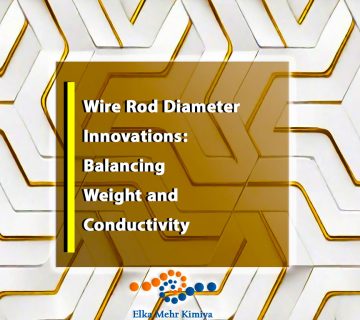Table of Contents
- Introduction
- Historical Context and Current State
- Cost Analysis of Undergrounding Power Lines
- Initial Construction Costs
- Maintenance Costs
- Technical Advancements and Challenges
- Impact of Natural Disasters on Power Infrastructure
- Economic Implications for Utilities and Customers
- Tangible and Intangible Costs
- Case Studies and Comparative Analysis
- Regulatory and Policy Considerations
- Who Pays for Undergrounding?
- Regulatory Reforms Needed
- Independent Assessments and Cost Justifications
- Future Directions and Innovations
- Conclusion
- References
1. Introduction
Hurricanes like Sandy and other storms that have hit the United States often leave many utility executives, their customers, local and state government leaders, and regulators considering the option of moving overhead power lines underground. This desire gains traction whenever natural disasters wreak havoc on the overhead distribution and transmission networks nationwide. Historically, the greatest obstacle to undergrounding overhead power lines has been the higher cost of both installation and maintenance for underground lines.
While overhead power lines are generally more cost-effective, they are vulnerable to damage from falling tree branches, debris, and severe weather conditions such as high winds and ice. This damage can result in prolonged power outages that in extreme cases may take days or even weeks to repair, as evidenced by Hurricane Sandy and more recently in Puerto Rico and Florida. The financial burden of repairing these physical damages can reach billions of dollars. Extended outages following a disaster also bring intangible impacts to a utility’s customers, such as feelings of despair, discomfort, anxiety, and helplessness.
Elka Mehr Kimiya is a leading manufacturer of aluminum rods, alloys, conductors, ingots, and wire in the northwest of Iran equipped with cutting-edge production machinery. Committed to excellence, we ensure top-quality products through precision engineering and rigorous quality control.
2. Historical Context and Current State
The history of the U.S. electrical grid is marked by a reliance on overhead power lines, primarily due to their lower installation costs and ease of maintenance. However, as urban areas have grown and technology has advanced, the vulnerabilities of overhead systems have become more apparent, particularly in the face of increasingly severe weather events.
3. Cost Analysis of Undergrounding Power Lines
Initial Construction Costs
The cost of constructing underground power lines is significantly higher than that of overhead lines. According to a report by the Public Service Commission of Wisconsin, the estimated cost for constructing underground transmission lines ranges from 4 to 14 times more expensive than overhead lines of the same voltage and distance. For instance, a typical new 69 kV overhead single-circuit transmission line costs approximately $285,000 per mile, whereas a new 69 kV underground line can cost around $1.5 million per mile.
Maintenance Costs
Evaluating the maintenance costs of underground lines involves many variables and assumptions, making it a complex task. Predicting the performance and longevity of underground cables is challenging, yet maintenance costs are substantial and one of the primary deterrents to wider underground line implementation. Major factors affecting these costs include:
Cable Repairs
Underground power lines are shielded from many weather-related damages that affect overhead lines. However, they are susceptible to insulation deterioration due to the thermal cycles they experience over their lifespan. As the insulation weakens, the likelihood of a fault increases. If a fault occurs, the costs associated with locating and repairing it, including trenching, splicing, and re-embedding the cable, can be five to ten times higher than repairing an overhead line fault.
Line Outage Durations
Repair durations for underground lines can vary significantly based on the operating voltage, site conditions, type of failure, material availability, and the experience of repair personnel. For example, repairing a fault in a cross-linked polyethylene (XLPE) cable can take five to nine days, while repairs for other types of underground cables, such as high-pressure gas-filled (HPGF) or fluid-filled cables, can take even longer. In contrast, faults in overhead conductors are typically located and repaired within hours to a few days.
Line Modifications
Modifying overhead power lines is relatively straightforward compared to underground lines. Tapping, rerouting, or modifying underground lines is more complex and costly due to the difficulty in accessing the cables once they are buried. For instance, providing electric service to a new home near an overhead line can be done quickly, often within a day or two. However, if underground service is required, the process can take one to two weeks, increasing the infrastructure cost.
4. Technical Advancements and Challenges
Recent advancements in cable technology, conduit sizing, grounding methods, and directional boring techniques have improved the reliability of underground power lines. However, these improvements have not significantly reduced the initial construction costs, which remain largely driven by the need to trench through the earth along the entire line route.
5. Impact of Natural Disasters on Power Infrastructure
Natural disasters highlight the vulnerabilities of overhead power lines, often resulting in extended outages and significant repair costs. Hurricane Sandy and similar events have demonstrated the need for more resilient infrastructure. The cost of physical damage from such events can reach billions, and the extended outages have severe intangible impacts on customers, including despair, discomfort, and anxiety. Additionally, there are considerable direct economic impacts from lost economic activity, food spoilage, and looting.
6. Economic Implications for Utilities and Customers
Tangible and Intangible Costs
The economic implications of undergrounding power lines are multifaceted. On the tangible side, there are the high initial construction and ongoing maintenance costs. On the intangible side, extended outages due to repair delays can cause significant distress and inconvenience for customers. Moreover, long outages result in direct economic losses from halted business activities, spoiled food, and increased incidents of looting.
7. Case Studies and Comparative Analysis
Various regions have experimented with undergrounding power lines, providing valuable case studies for analysis. For instance, southeastern Connecticut, one of the wealthiest areas in the state, had portions of a new 345-kV line built underground due to public opposition. The additional costs were borne by local ratepayers rather than being spread across the entire New England region. Such case studies highlight the complexities and regional variations in cost allocation and regulatory decisions.
8. Regulatory and Policy Considerations
Who Pays for Undergrounding?
One of the most contentious issues is determining who should bear the differential costs of undergrounding power lines. Currently, these costs are often passed on to land developers who request underground services, and they, in turn, pass the costs to home buyers. For transmission lines, cost allocation is more complex, often involving regulatory decisions that may require local ratepayers to absorb the additional expenses.
Regulatory Reforms Needed
Significant regulatory reforms are needed to redefine responsibility for the differential costs associated with underground power lines. One approach could be to develop separate rates for customers served by underground versus overhead lines, tracking and allocating maintenance costs accordingly. This would provide a more equitable system and encourage utilities to invest in underground infrastructure.
9. Independent Assessments and Cost Justifications
An independent assessment of the differential costs associated with undergrounding power lines is crucial. Utilities often face skepticism regarding their cost estimates, and independent evaluations can provide more credible and realistic comparisons. These assessments should consider local conditions, such as soil type and excavation challenges, to provide accurate cost projections.
10. Future Directions and Innovations
As technology advances and the frequency of severe weather events increases, the push for underground power lines is likely to grow. Innovations in cable materials, trenching techniques, and power distribution systems will play a crucial role in making undergrounding more feasible and cost-effective. Additionally, regulatory changes and new funding models will be essential to support the transition to underground power infrastructure.
11. Conclusion
The debate over undergrounding power lines is complex, involving technical, economic, and regulatory challenges. While the initial costs are high, the long-term benefits in terms of reliability and resilience may justify the investment. As natural disasters continue to impact overhead power lines, the pressure to find more sustainable and durable solutions will only increase.
12. References
- Public Service Commission of Wisconsin. (2011). Underground Electric Transmission Lines.
- Federal Energy Regulatory Commission. (2020). Reliability Primer.
- Edison Electric Institute. (2019). Out of Sight, Out of Mind 2019: An Updated Study on the Costs and Benefits of Undergrounding Overhead Power Lines.
- National Association of Regulatory Utility Commissioners. (2020). Manual on Distribution Reliability and Service Quality Indices.
- U.S. Department of Energy. (2021). Grid Modernization: Undergrounding Power Lines for Resiliency.
- American Public Power Association. (2018). Undergrounding Assessment Phase 1 Final Report.
- Institute of Electrical and Electronics Engineers. (2019). IEEE Guide for the Design and Installation of Cable Systems in Substations.
- Electric Power Research Institute. (2020). Underground Transmission Systems Reference Book.
- International Council on Large Electric Systems. (2017). Technical Brochure on the Feasibility of Undergrounding Power Lines.
- Energy Information Administration. (2019). Annual Energy Outlook.
















No comment